A strip of fabric. A single button. An extra zipper.
Living in a world where those items have creative value feels like a foreign concept, but for one special class, those scraps make all the difference.
Assistant lecturer of fashion industry studies Audrey Robbins saw a need for a creative hands-on construction course. Her students were constantly striving to reuse the clothing they had to construct new designs.
“Students were already saying ‘Can I reuse this pair of jeans and turn it into a skirt that I want for my line?’” Robbins says.
When the dean’s office opened up the opportunity for a one-time course to be pitched, Robbins wrote the proposal that eventually led to the creation of Fashion 299X — otherwise known as Recycled Runway.
The concept of Recycled Runway directly competes with fast fashion, the marketing of clothing fashions that emphasize making trends quickly and cheaply available to customers, according to Merriam-Webster.
Robbins emphasizes the average closet has enough combinations of clothes to never repeat an outfit in a three and a half year span. However, around 62 million metric tons of apparel are consumed globally in a given year due to the popularity of trends, according to the Princeton Student Climate Initiative. When new trends are introduced and old ones are thrown out, 57% of all discarded clothing ends up in landfills.
“We are one of the biggest polluters in fashion,” Robbins says. “Not only are we wasting our original design, we’re wasting at the end of what we believe is the shelf life of a product.”
To combat this, Recycled Runway has taken a unique approach to
fashion designing.
Using 100% free resources including donated clothing, swap and shops, and left over materials from previous projects, students in the class are challenged to create two different looks from already existing clothing and fabric.
This has proven to be no easy feat. Junior fashion industry studies major Ivy Summerlot has created a clothing line titled “Trash is Art”, which aims to take someone else’s trash and give it another life. She shares that the class has taught the students how to be resourceful. If they can’t find the right fabric or thread color they need, students must get creative.
Regardless of the challenges, Ivy shared that in her eyes, sustainability “is the future” and is slowly becoming the new normal.
“I’ve come to a point where I don’t really buy ‘new’ clothing anymore,” Ivy says. “Everything is thrifted, upcycled [or] bought second hand from Depop or resellers.”
As students become more conscious of the environmental impact of fast fashion, thrifting — or buying second hand — has gained traction in recent years as an alternative way to elevate a wardrobe. Junior fashion industry studies major Emily Hayes says the trial and error that students face with different creations in Fashion 299x has taught them how to be better thrifters.
“It’s really looking at the production quality of clothing that already exists and seeing what truly is great quality and what came from fast fashion,” Emily says. “[The class] helped me build my skills of identifying that.”
Emily works as a student assistant under Robbins along with senior fashion industries studies major Jakota Fischer. Both students played a large part in the planning and preparation for the class. During their research, they dissected the availability of textile recycling in the United States and learned there’s slim pickings.
Cities on the east coast, including New York, Maine, and Connecticut, have put the most money and effort into textile recycling, according to Promo Leaf, a environmentally conscious promotional product producer. While clothing can be shipped to these locations, the distance makes it more difficult for individuals in the Midwest who want to recycle their old clothing to have access to the resources they need for a responsible price.
For any true scrap fabric Fashion 299X can’t use, they’re recycling through a company called Check Sammy. The class paid for a box that can be filled with as much material as possible, and when it’s full, it’ll be sent back to the nearest Check Sammy location. Although the company offers free shipping, that singular box cost the class $300.
Despite the high cost, Emily acknowledges the importance of having companies that are dedicated to recycling textiles because even donating your clothes to thrift stores could land them in a landfill someday.
As the semester comes to an end, as does this once-in-a-lifetime class. Having acquired 21 students to sign up for it in its first year, Robbins wants to pitch that it’s held every few years, if funds allow, to grant students an opportunity to explore the world of sustainable fashion.
“Sustainability can just be a buzzword, but we really have enough of this generation that really wants to invest in it,” Robbins says. “They want to learn more about it. They want to participate in it. They want the opportunity to learn more [and] to do better with it.”
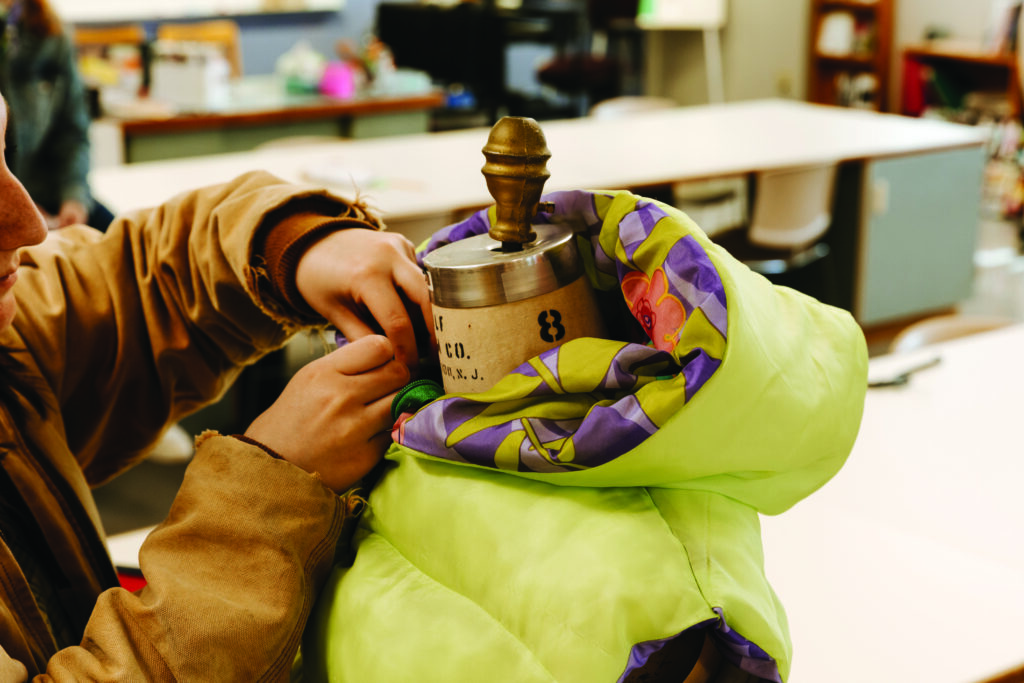
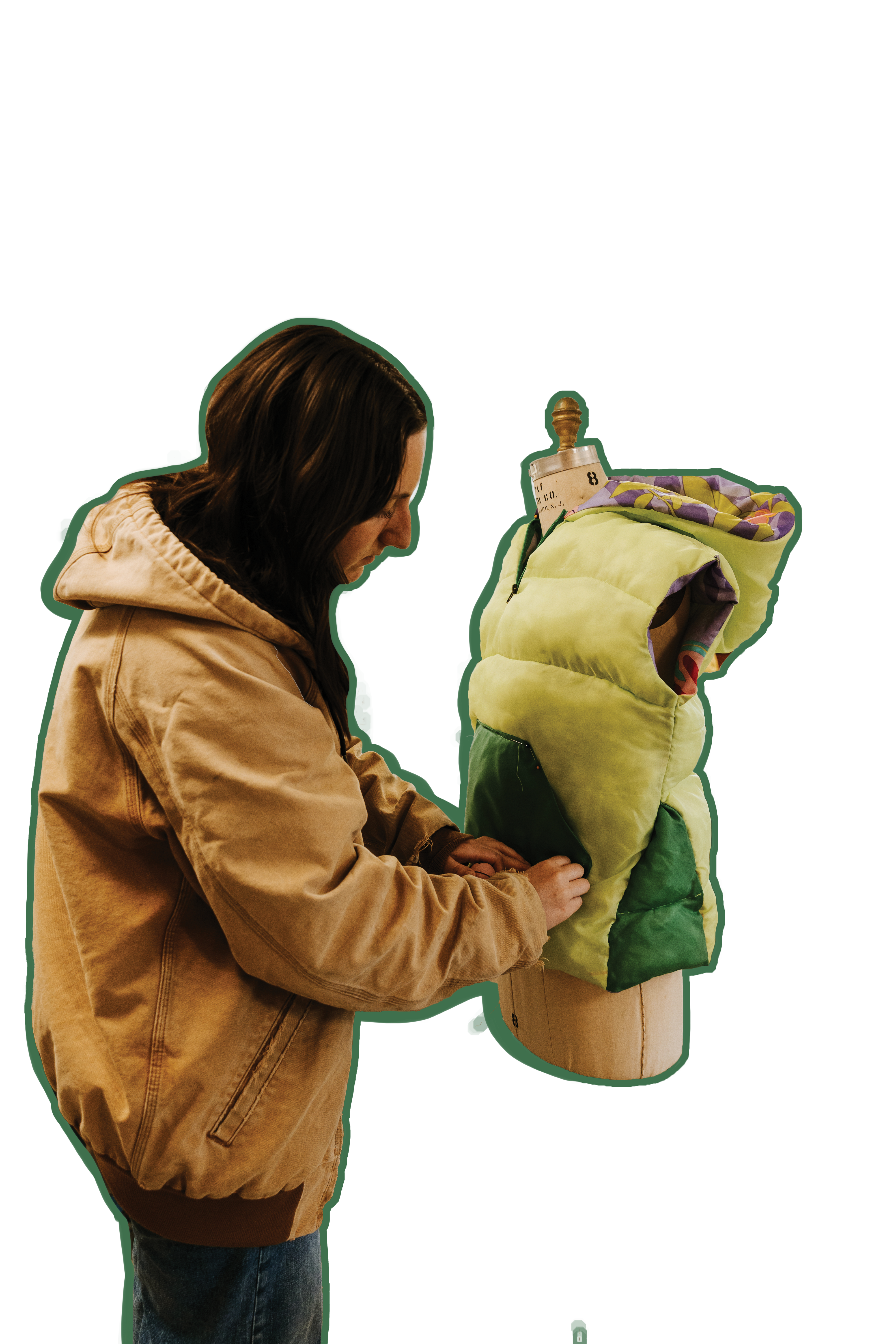
Photo Illustration by Jessica Bergfors

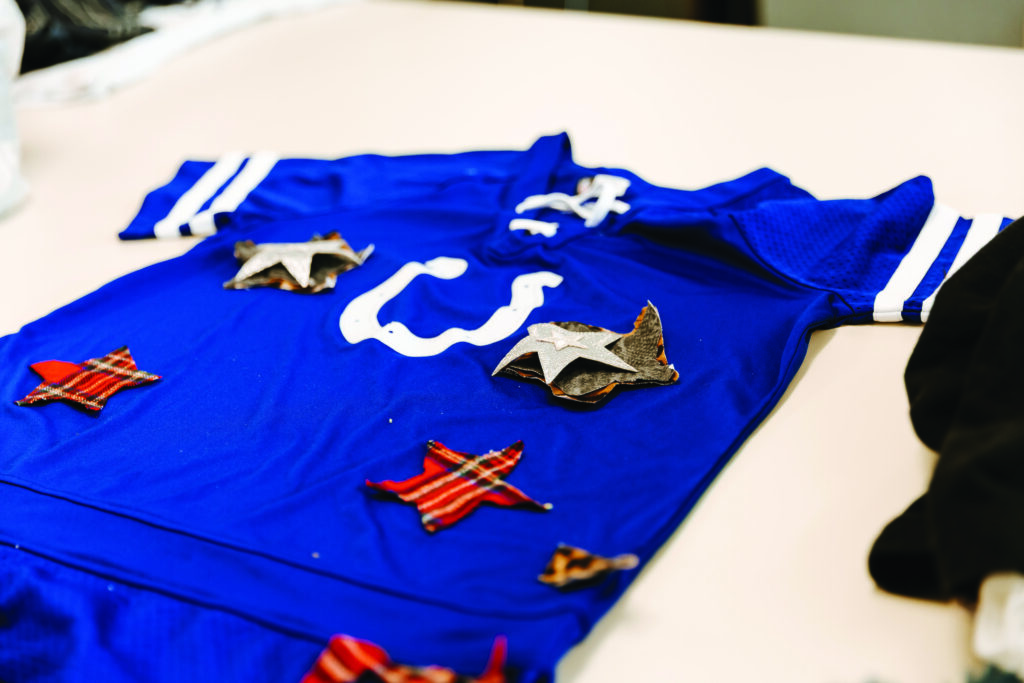
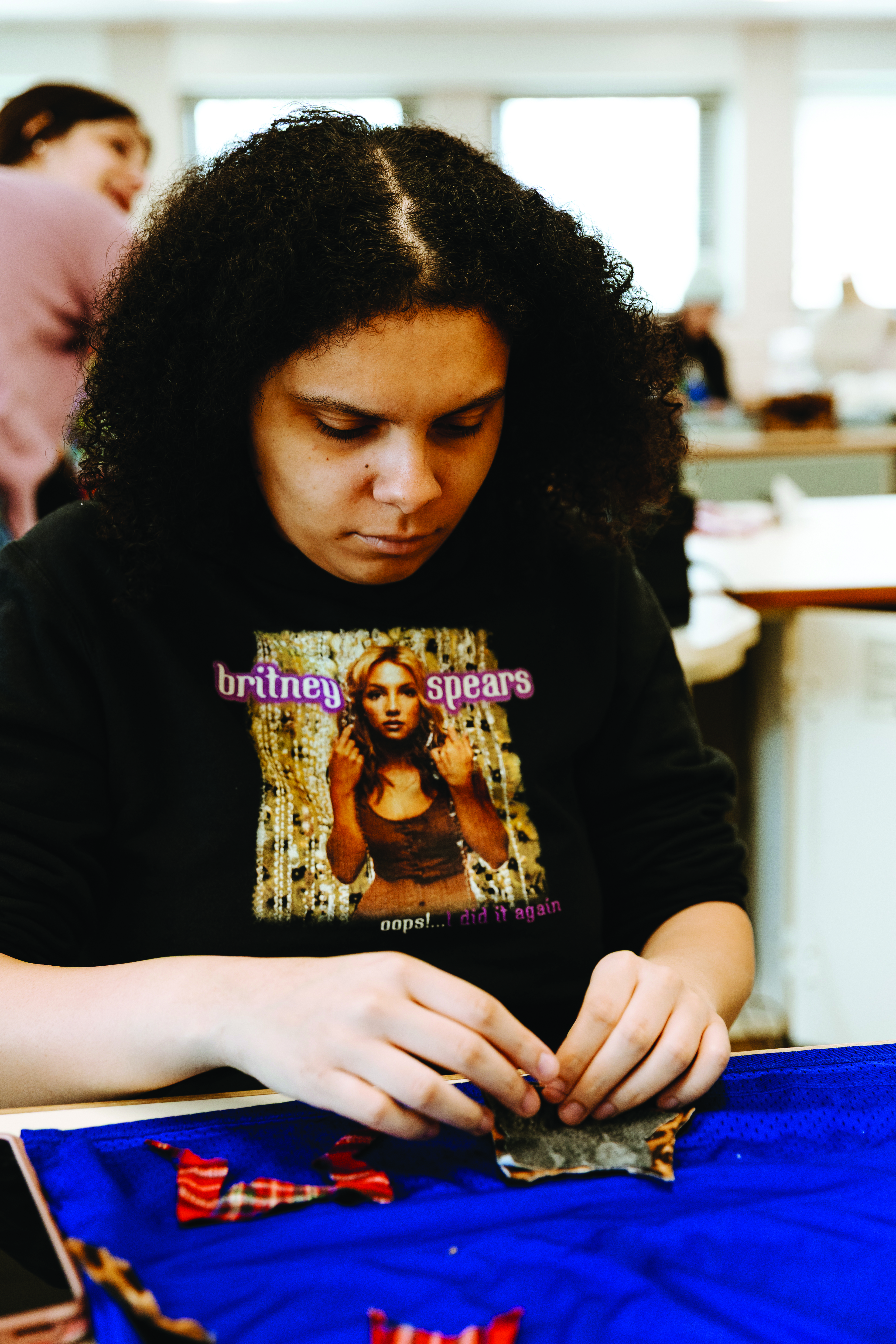
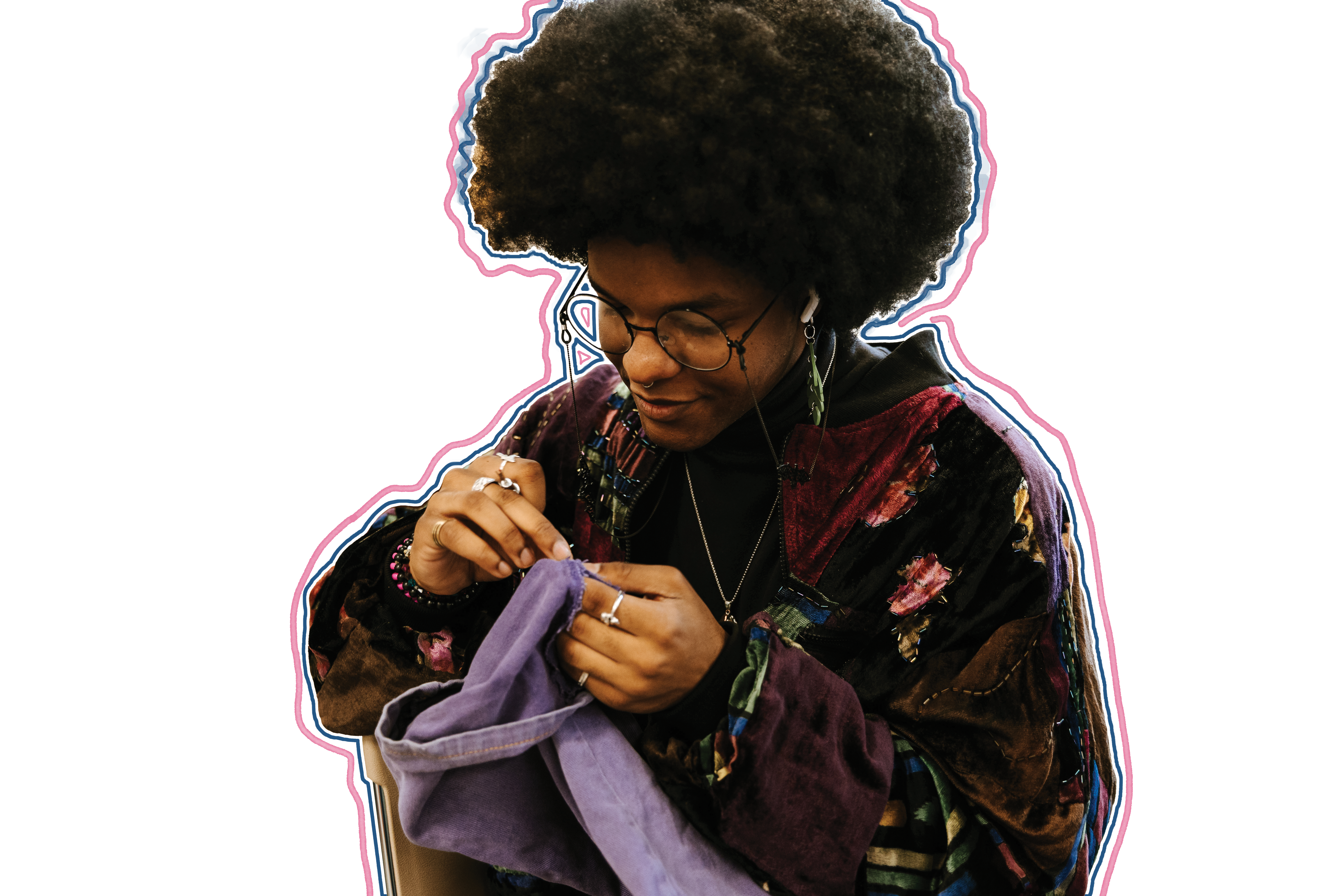
Photo Illustration by Jessica Bergfors
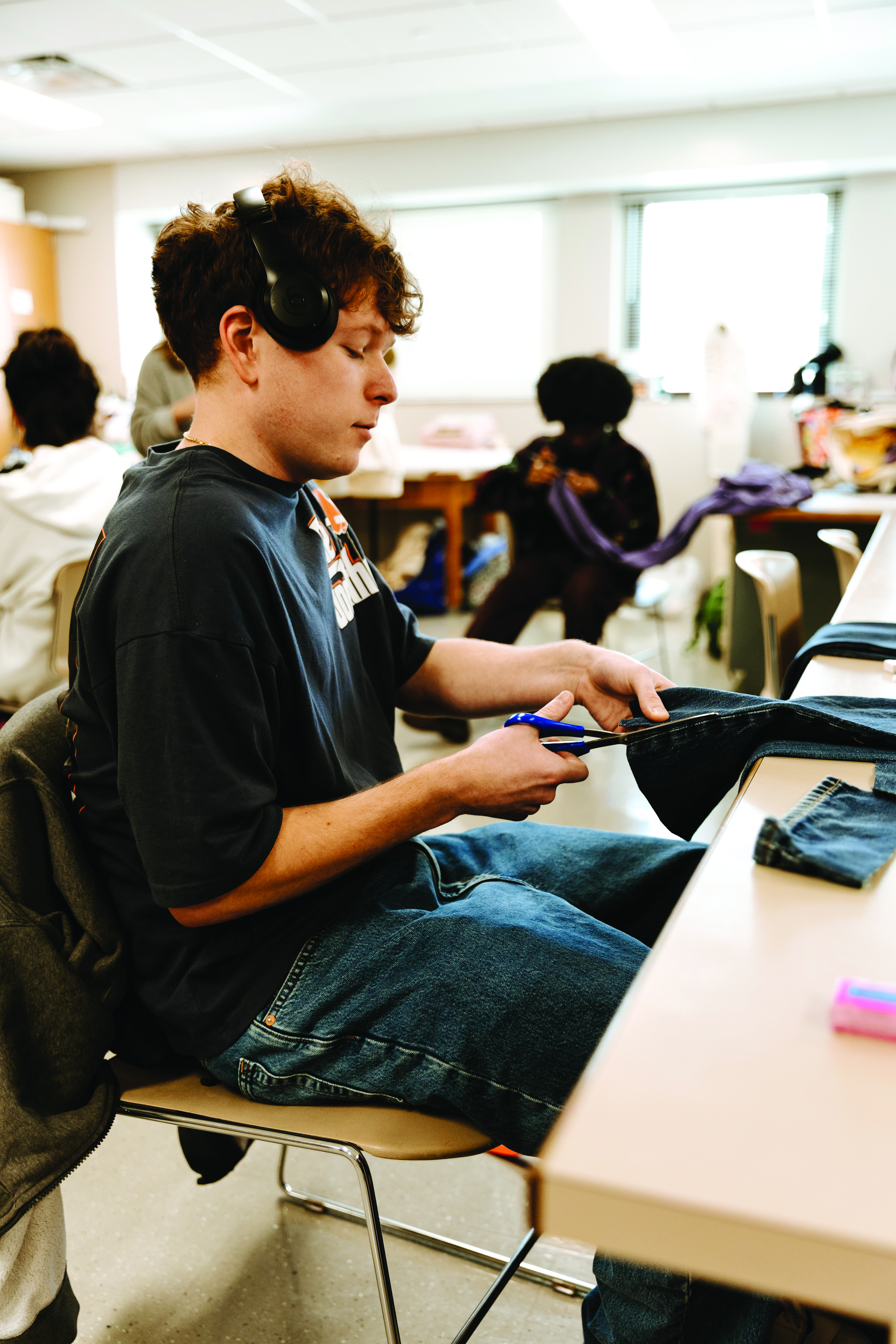
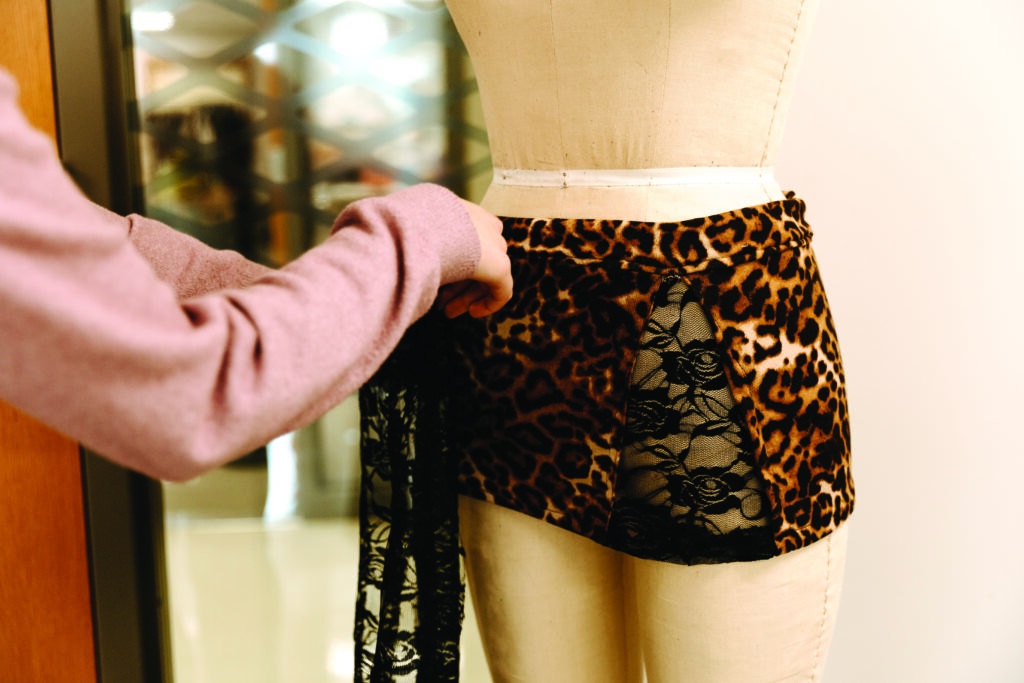
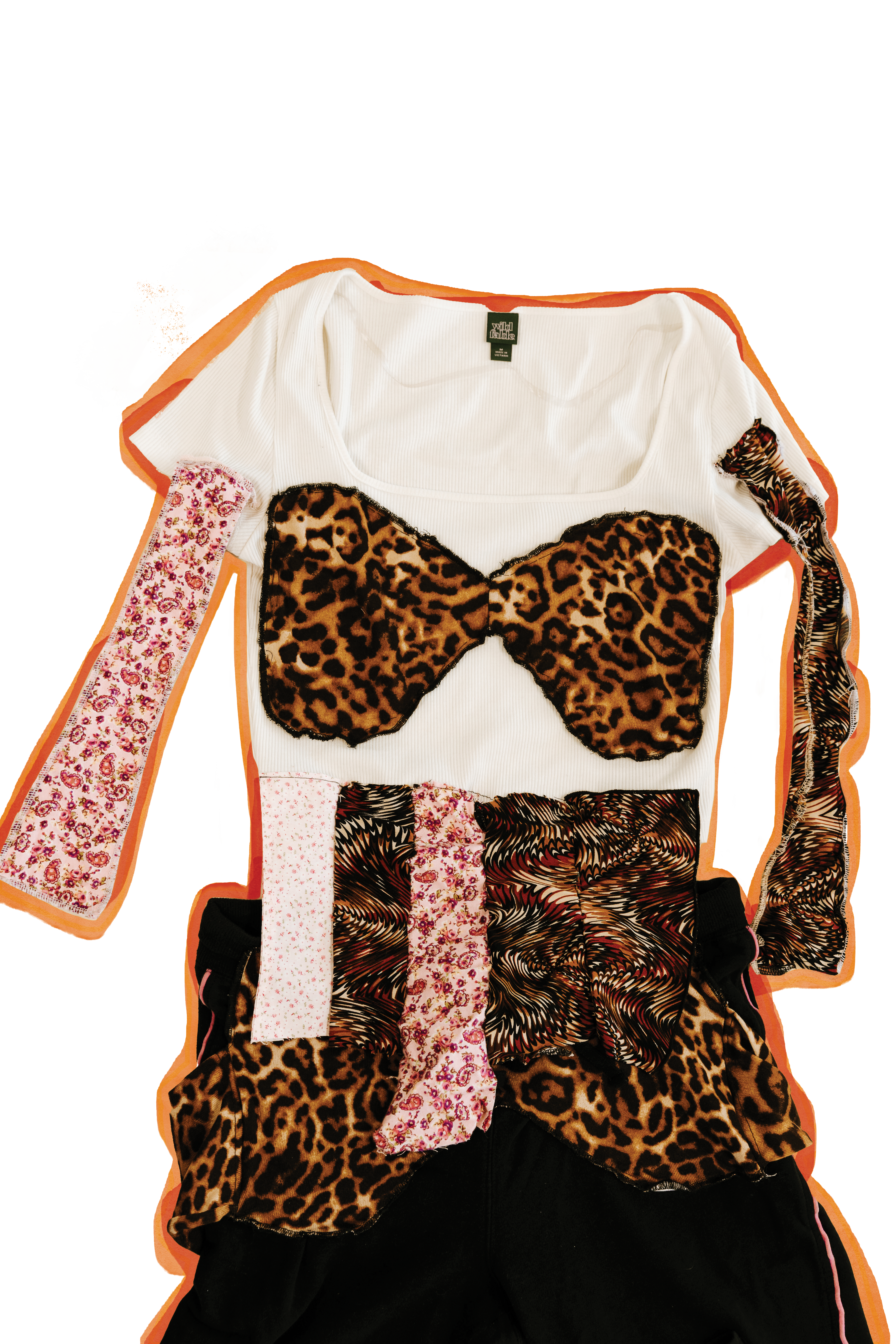
Photo Illustration by Jessica Bergfors
Sources: Check Sammy, Merriam-Webster, Princeton Student Climate Initiative, Promo Leaf


